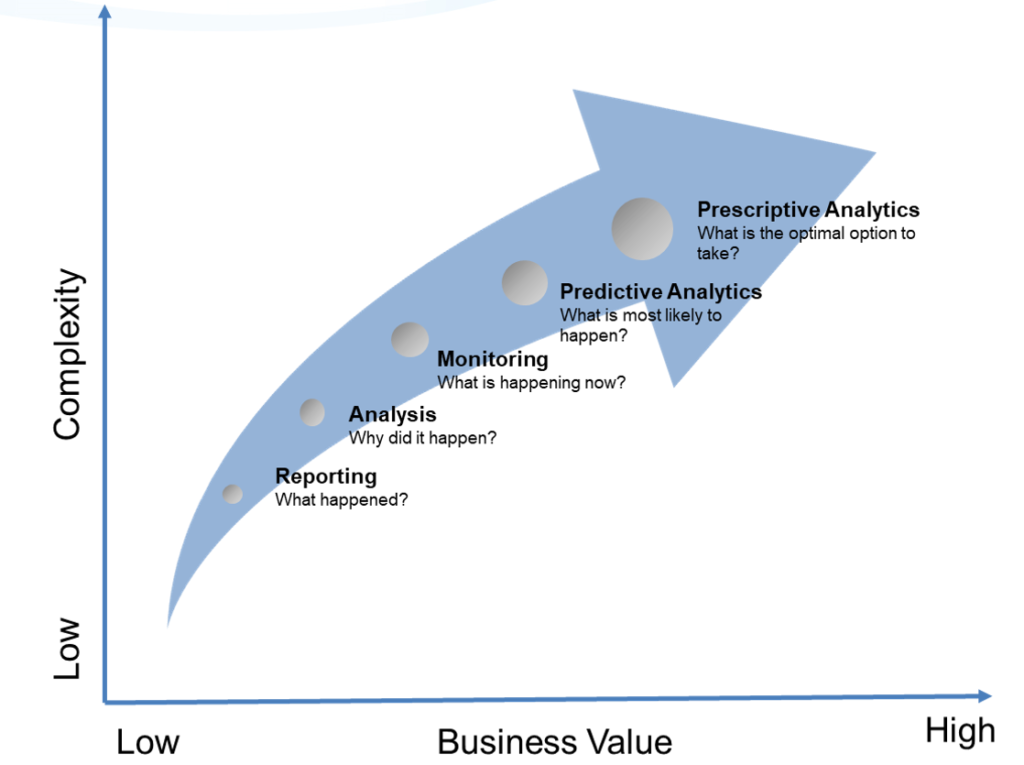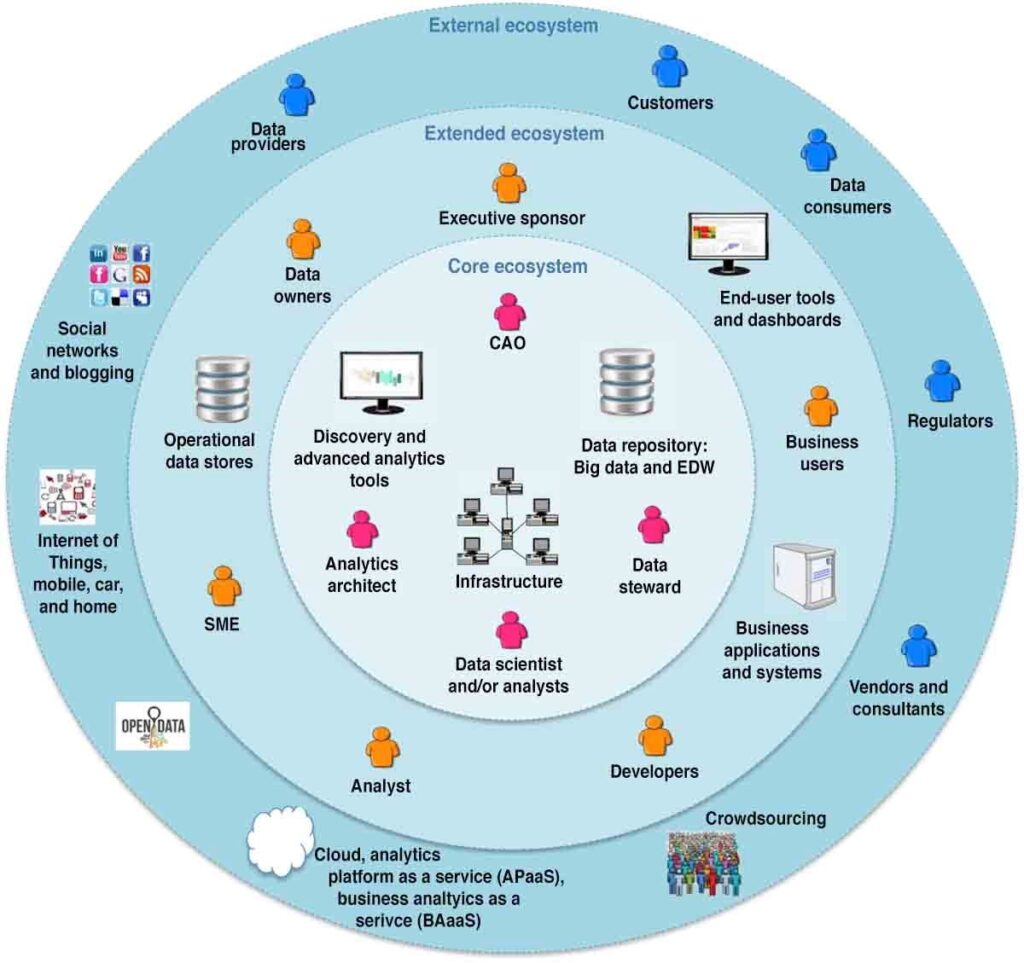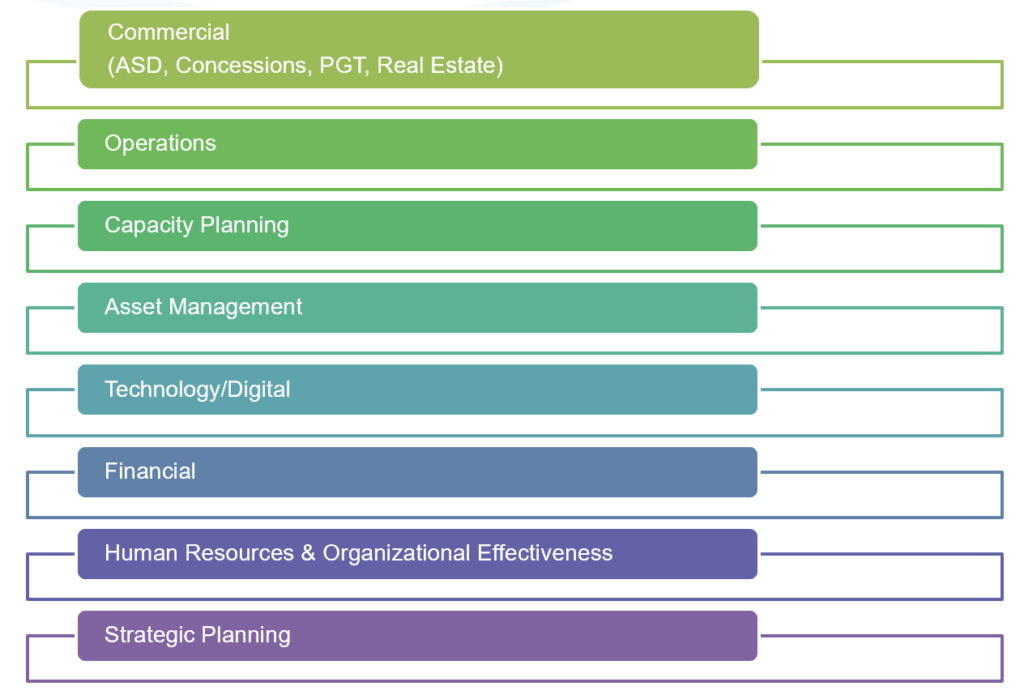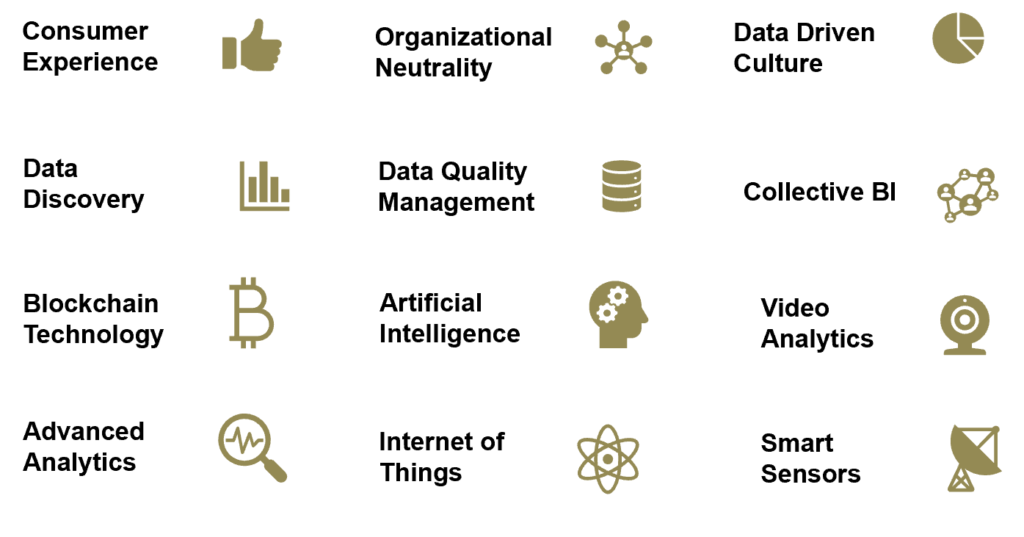Aviation is a highly competitive industry, and with lower margins then other industries, airports need to ensure that they have a competitive niche and are transforming their businesses to keep up with changing tides. Approximately 70% of the world’s airports lose money, which clearly highlights the need for the effective and efficient use of data and analytics. As W. Edwards Deming says, “In God we trust, all others must bring data”. Airports create and use massive amounts of data and must ensure that they are properly analyzing this data to ensure that their decision making is informed, and that they are using every bit of intelligence available to create organizational value. Airports can create organizational value in three ways: 1) enhancing and diversifying revenues 2) optimized use of assets, such as runways, check-in counters, gates, slots, etc. 3) creating efficiencies: Minimum connecting time, higher employee ratio to passengers/revenues, etc. In this article, we will explore what airport analytics is, how it can help the airport business transform, what resources are needed for setting up a lean and effective analytics department, examples of analytics in airport environment and finally end with some key trends in analytics for 2020. What exactly is airport analytics? While analytics is a common buzzword, the concept itself is an essential component of any successful business. Let’s start with the definition, and the one I like to use is: “Analytics uses statistics, finance, economics, data science, software, and hardware to convert the raw data into insights for businesses to tap into emerging opportunities and mitigating risks”. Analytics is the process of discovering patterns in contextual business data for effective decision-making. It is an iterative process and needs continuous improvement to be refined for best outcomes. Each airport at any given time falls within the following matrix of maturity. One key thing to note is that as airports climb up the ladder of maturity it becomes more complex, but the rewards are even greater in terms of business value.


While there are quite a few frameworks for analytics, Figure 2 above shows the crucial steps to follow for airport analytics. Any data analytics approach starts with what the business needs are and what kind of problems/opportunities the airport needs to address. This is the most important step and needs to be properly articulated, or else the outcomes will not align with the issue at hand. Once the business need has been properly identified, you would then move towards identifying the relevant data sources and preparing them for analysis. Airports are rich with data, so identifying which data set is needed is crucial. For example. if you are looking to drive efficiencies in on-time departures or turn-around times, knowing the scheduled and actual time of departure, processing times of various processes, etc. is mandatory. Once the data has been transformed, it is then ready for analysis to look at insights for opportunities that might arise, or any challenges airport might face. I would also like to debunk some common myths that I see quite often in the industry. Some Myths about Analytics Your airport isn’t big enough to need analytics Airport size is irrelevant. You can use two basic data sets like passenger numbers and seat capacity, mesh it with your finance data and do ASD analysis, capacity and financial analysis, etc. 2. Great insights sell themselves Great insights are strong and have a lot of traction, but sometimes pose challenges to traditional way of doing things. In instances like these, a proper change management plan and data storytelling greatly helps. 3. We have a lot of data, and that’s good Having a lot of data should not be the goal, but having relevant data is the key. Analysts then needs to apply various models and techniques to have meaningful insights for airports for optimized decision-making. 4. Analytics won’t tell you anything you don’t already know The world changes over time; what may have been true ten years, five years, or even a few months ago may no longer hold true. A true data culture employs the scientific method and always tests what we think we know to see if it still holds true. Through this process, new insights are gained, and strategies and tactics can be adjusted much faster to ensure desired outcomes are achieved. 5. Reporting = analytics Reporting is the process of organizing data into informational summaries in order to monitor how different areas of a business are performing, Analytics is the process of exploring data and reports in order to extract meaningful insights, which can be used to better understand and improve business performance. Both are important, but distinct, functions. 6. Analytics is an IT function This myth stems from confusing reporting with analytics. Reporting in old legacy systems was/is very much dependent on IT and IT skill sets. Analytics is focused on working with data to provide insights that help drive business decisions and outcomes. Modern tools allow for analysts to perform this function with a limited knowledge of query languages and more emphasis is placed on math, data and business knowledge. Modern organizations have developed analytics as a stand-alone function, often under a Chief Analytics Officer (CAO) in larger organizations. How can analytics help airports transform? Airports around the world are revisiting their current business models and/or exploring ways how they can disrupt the industry, but the approaches they are using are quite traditional, such as: non-hubs trying to be hubs, becoming an Aerotropolis, increasing non-aeronautical revenue, developing air services, and the list goes on. By no means am I saying that these approaches don’t have merit; these are solid business tactics that give a pretty good return on investment to the airports. The issue is that almost all airports are targeting the same business segments without looking into what the customer wants, how the markets are changing, is the business sustainable, etc., and that’s where analytics comes in and can help the airports target the right business opportunity, identify areas of optimization and new revenue streams to reinvent the business model, and also to enhance passenger experiences to what passengers really want, rather then what stakeholders want it to be. Below are some of the examples of key areas where analytics can help airports be at the leading edge of the curve and have a focused approach to what needs to be changed, what is valued by customers, avoid duplication of resources, have a competitive edge, and disrupt the industry before they get disrupted by it.

Required resources for setting up a lean and effective analytics department A successful data analytics program requires several ingredients and calls for a comprehensive skill set in analytics, business, and technical areas. Data analytics touches many functions, groups, and people in organizations. Its application may begin as an experiment, but as it evolves it can have a profound impact across the organization, its customers, its partners, and even its business model. A successful big data analytics program requires many interacting elements. It requires, of course, data, which must be integrated from many sources, different types of analysis and skills to generate insights, and active stakeholders who need to collaborate effectively to act on insights generated. The following resources are needed for setting up a bare minimum analytics department: · Human Resources: Data Scientist and a Business Intelligence Developer · Infrastructure: Data Repository · Tools & Applications: ETL tools and a data visualization tool More sophisticated airports need to look at the whole analytics ecosystem, which contains individuals and groups — business and technical teams with multiple skillsets, business partners and customers, internal and external data, tools, software, and infrastructure. A thriving data analytics ecosystem facilitates collaboration among core, extended, and external ecosystems.

In the Core ecosystem, individuals and technologies assemble the data that is required, analyze the data to generate insights, and determine actions based on these insights to achieve business outcomes. In the Extended ecosystem, individuals, groups, and systems direct the analytics projects, collaborate with the core team, provide raw data, consume the outputs, and act on the insights. And in the external ecosystem, customers, business partners, vendors, data providers, and consumers interact with the organization to help deliver the full potential of big data goals. Examples of analytics in airport environment While analytics is an overarching framework for realizing business value, the areas mentioned below (e.g. air services development, operations, and capacity planning) absolutely need strong analytics to be performed, as those relate to core activities and business model for the airports

Key analytics trends for 2020 Over the past decade, the field of analytics has been greatly revolutionized. Data has exploded and became big and is increasing at high volume at every given second. Spreadsheets finally took a backseat to actionable and insightful data visualizations and interactive dashboards. The rise of self-service analytics has democratized the data product chain and as a result, advanced analytics is not only for analysts anymore, but the power has been transferred to business users. 2020 will see major advancements in analytics and some key trends that will be visible across airports and other industries are illustrated in the following graphic.

I won’t go through all these, but I will touch upon some important ones. Consumer experience is one that should be top of mind for all analytics projects. This includes how the user interacts with the analyses, either through a data visualization tool or just navigating through the dashboards. This also yields to higher engagement with business users and promotes a data driven culture. The next one I would like to touch upon is the collective BI. Gone are the days in which you can do analysis while being siloed. For any effective BI/analytics program, one has to work cross-functionally with all business areas, IT, and other stakeholders to ensure that one has the holistic picture of the business and the industry. The last one I would like to touch upon is the organizational neutrality. You have to empower all the users with trusted, clean and ready-to-use data rather then restricting information. Also, one has to ensure that BI/analytics are free of influence from any business area and that’s why forward-looking businesses have increased analytics position to a C-suite position as Chief Analytics Officer. References http://www.airport-world.com/features/economics/2691-airport-profitability.html https://www.datapine.com/blog/business-intelligence-trends/
